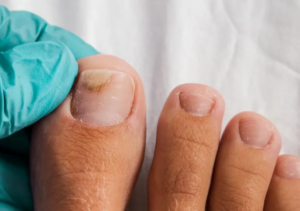Onycholysis is a common nail disorder characterized by the separation of the nail from the nail bed, starting at the tip and progressing back towards the cuticle. This condition can affect both fingernails and toenails, leading to pain, discomfort, and potential secondary infections if left untreated.
Causes of Onycholysis
- Trauma or Injury: Physical trauma, such as banging the nail or repetitive pressure, can cause onycholysis.
- Fungal Infections: Infections such as onychomycosis can lead to the separation of the nail from the nail bed.
- Psoriasis: This chronic skin condition can affect the nails, causing onycholysis.
- Contact Dermatitis: Allergic reactions to nail cosmetics or chemicals can trigger the condition.
- Systemic Diseases: Conditions like thyroid disease, anemia, and diabetes can be associated with onycholysis.
- Medications: Certain medications, including chemotherapy agents, can cause the nails to separate.
- Moisture Exposure: Prolonged exposure to water or damp environments can weaken the nail structure.
- Nail Disorders: Other nail disorders, such as lichen planus, can cause onycholysis.

